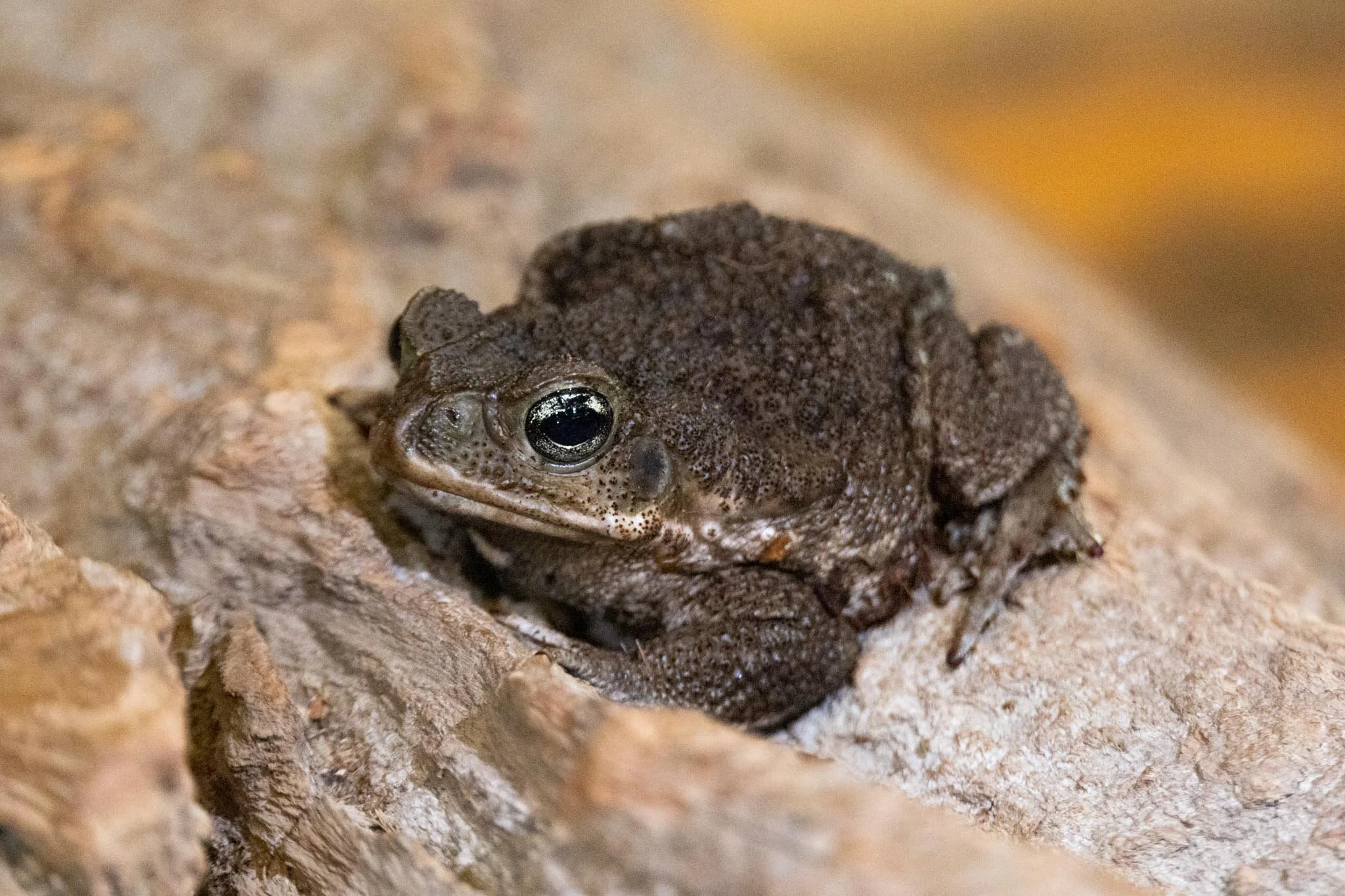Cane Toad
Habitat: Sand dunes and coastal grasslands to the margins of rain forests and mangroves. In environments into which they have been introduced, they also may inhabit urban and agricultural areas.
Diet: Anything they can swallow, limited only by the size of their mouths. Most of their diet consists of insects—beetles, honey bees, ants, winged termites, and crickets—but they also occasionally eat marine snails, native frogs, small toads, snakes, and small mammals such as cats and dogs.
Lifespan: 10-15 years
Ooze
Ooze came to Turtle Bay from Florida. He was living there as a wild toad, but Cane Toads are an invasive species if found anywhere besides Brazil.
Cane Toads will eat literally ANYTHING that they can fit in their mouths. This causes a huge disruption to any ecosystem that they invade, harming the native species in that area.
Fun Facts
Cane toads are native to South and mainland Central America. They were also introduced to various islands throughout Oceania and the Caribbean, and can also be found in Australia. They’re also known as ‘marine toad’ and ‘giant’ toad.
In less than 85 years, the cane toad population has multiplied to epidemic proportions. Now, some scientists estimate that there are more than 200 million cane toads hopping around our continent, wreaking havoc on our ecosystem and expanding across northern Australia at a rate of 50 km every year.
Cane toads are toxic at all life stages - from eggs to adults. They have large swellings called parotoid glands on each shoulder behind their eardrums This is where they carry their milky-white toxin (known as bufotoxin). Their skin and other glands across their backs are also toxic.
This spells bad news for Australia’s native species, as they haven’t had time to adapt to these toad toxins. One lick or bite can cause native animals to experience rapid heartbeats, excessive salivation, convulsions, paralysis and death.Cane toads will eat anything they swallow - both dead and living. This includes pet food, carrion and household scraps, but mostly they exist on a diet of living insects.


